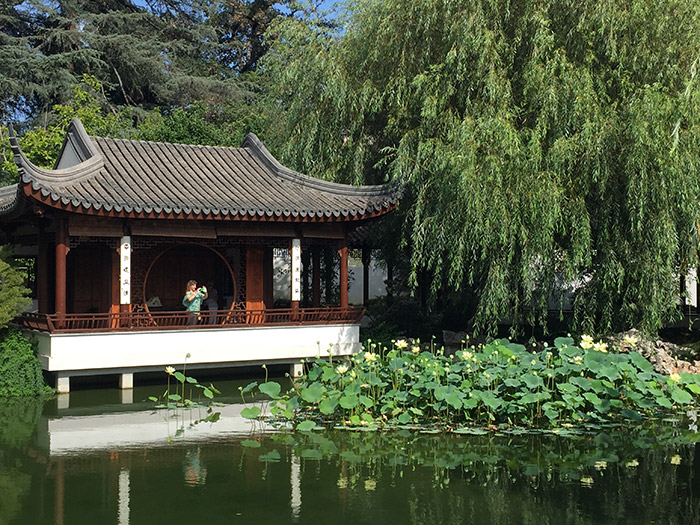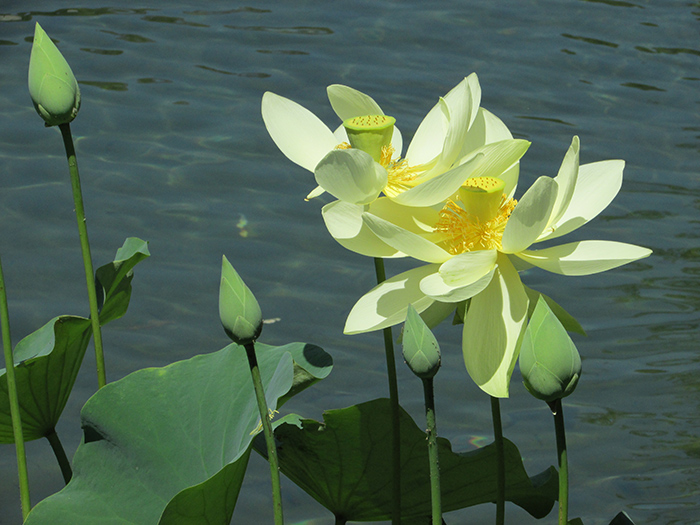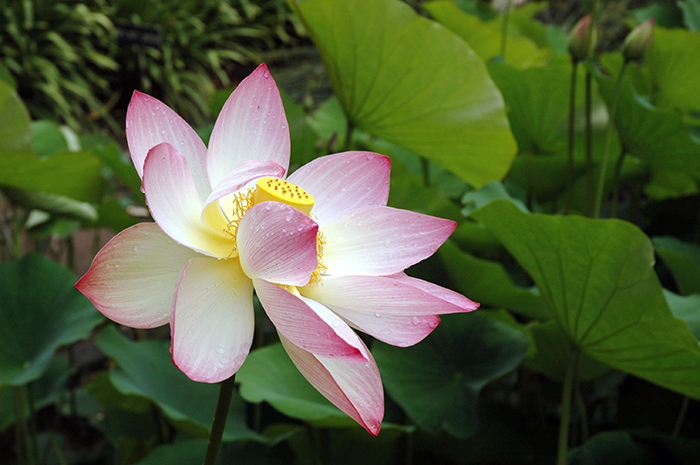Recent visitors to The Huntington’s Chinese Garden—or Garden of Flowing Fragrance (Liu Fang Yuan)—may have noticed lotus flowers in bloom. The warm summer sun prompted their young leaves to emerge and float on the surface of the Lake of Reflected Fragrance. Later leaves rose above the surface, forming long stalks that became the pedestals for the prized blooms.
The sacred lotus (Nelumbo nucifera) has long been cherished in China and elsewhere in Asia. In a recent essay on the symbolism of the lotus, Duncan Campbell, the June and Simon K.C. Li Director of the Center for East Asian Garden Studies and Curator of the Chinese Garden, writes: “Of enormous significance within the symbolic world of traditional China, the lotus was most intimately connected with Buddhist iconography: the flower that rises from the mud is not itself sullied. The seed pods, flowers, and buds of the lotus have been understood by many to represent the past, present, and the future.” The Chinese names for the lotus, lian or he, pun with words that mean “continuity” and “harmony,” both important aspects of traditional belief systems.

Photogenic lotuses make for great close-ups. The Love for the Lotus Pavilion is an ideal spot for grabbing a few snapshots of surrounding scenery. Photo by Christine Quach.
The lotus has also served as a source of inspiration for Chinese writers and philosophers. Hunanese Neo-Confucian philosopher Zhou Dunyi (1017–1073) wrote that the lotus was a symbol of integrity: “Rising unsullied from the mud, bathing in the clear ripples but never with meretricious intent, wholesome within and straight without, neither spreading like a vine nor sprouting from a branch, its fragrance growing ever more pure as it spreads about, standing tall and erect, to be observed from afar but not dallied with up close.”
This excerpt comes from Zhou’s famous essay titled “On the Love of the Lotus” (Ai Lian Shuo), which inspired the name of the Chinese Garden’s Love for the Lotus Pavilion (Ai Lian Xie). Situated at the lake’s edge, the pavilion provides a perfect viewpoint for observing lotus blooms. Visitors can take it all in: the fabulous flowers, colorful carp, and blissful serenity.
Lotus flowers also bloom in the Lily Ponds, The Huntington’s oldest specialty garden, which Henry Huntington established in 1904. These plants can live a long time. One lotus purchased and planted in 1905 continues to flower each summer. Visitors can also catch a glimpse of The Huntington’s wildlife at the Lily Ponds. Koi, turtles, frogs, and ducks are just a few of the creatures that have taken up residence near the sacred lotus.
Sara Schacht is an intern in the office of communications and marketing at The Huntington.


